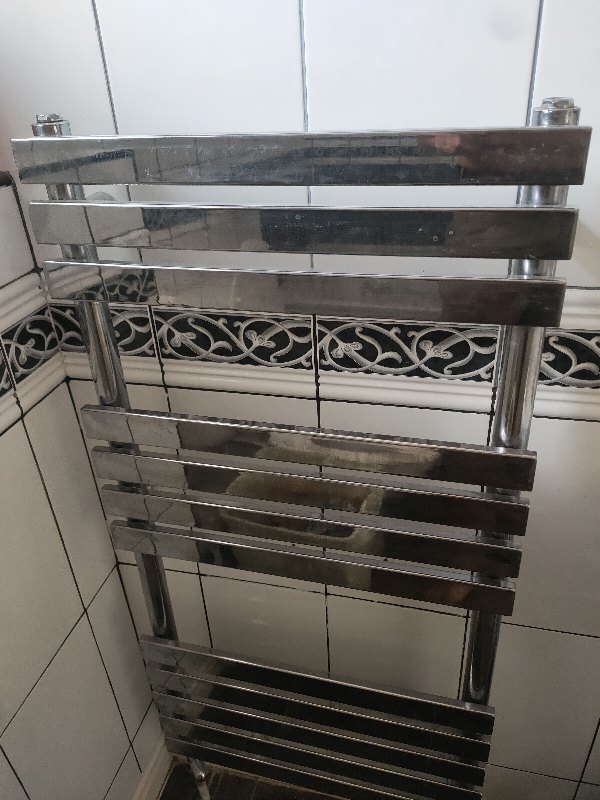Best Position for radiators
Hanging a radiator is much like a TV or a mirror in that its heavy needs proper fixings and hung level. So where best to place a radiator in the house? In bedrooms under the window sill as out the way of the wardrobe, desk and bed, and heat the space where heat is lost the most. In living spaces on the masonry under a double window or on a wall near the external door.
Types of radiators
There a few types of radiators vertical or horizontal and in range of sizes and colours chrome white anthracite. And then standard elementary white radiators. Towel radiators also can look appealing as well have slots to hang towels to dry in your bathroom.
Hanging the radiator
Standard radiator
Standard radiators slot into metal brackets which are fixed to the wall using plugs and masonry fixings.
After establishing the end height from floor of the radiator this can be marked on the wall with pencil and bracket screw postion determined. A level line drawn and corresponding bracket screw hole marked with tape measure. The hole can be drilled with 8mm bit plugged and bracket screwed to the wall.
Towel Rail / Vertical radiator
These come with 4 metal slots which are fixed to the wall then the radiator frame slots in and screwed to hold the radiator.
After fitting the top slots holding the radiator in position can determine the location of bottom slots.
Thermostatic Valves
Thermostatic valves control the temperature by when fully open allow an increase in flow and when shut no flow. These are fitting on the flow side left, and the manual valve on the return side.
Smear jointing compound to the inside radiator thread. Wrap round PTFE tape 8 to 12 around the thread of radiator tails and screw into the female thread of the radiator.
Draining down the system
An experienced plumber will find a point drain off which to drain down the system. This can be from a downstairs radiator bleed off valve if upstairs or ideally a drain valve. The process involves venting a radiator to relieve the 1.5 bar of pressure. Then attaching a drain hose and opening the valve. All the radiators bleed valves need to be opened as water can remain in the system by means of a vaccum and opening the bleed valve lets air out to releasing excess water.
Altering Pipe work
After draining down the system the pipework can be altered to line up with the radiator thermostatic valves. Copper pipe is cut or bent and then dry fitted and old pipes cleaned up by wire brush, fluxed, and then soldered. It important to clean pipes after as the flux residue is acidic and slowly wear the pipes green.
Testing Refilling
After plumbing the new pipework, bleed valves are shut, inhibitor added to the new radiator. The system is refilled, and pressurised to 1.2/1.3bar
If the pipework is good all compression fittings joint and snug and enough PTFE tape and compound put on the radiator screw threads all should be good and no leaks.
You can open the bleed valves one by one and refill the system to brim. Turn the boiler and all should be hot and toasty.
If the boiler turns off there is an air lock. The air lock can be removed by adding more pressure to the system and releasing to push out the air. Sometimes there is also sludge / magnetic iron filings blocking the pipework, to remedy this a cold flush can be done as well as installing a magnetic filter like the magna cleanse.
Rinse and Repeat…
Should there be any leaks if on a compression fitting can be tested with tissue paper and tightened if weeping. Though be careful not to overtightened and if this step fails then it is essential to drain down and go back to draining down and altering the pipework again. So it is important for someone experienced to do the job and get it right first time.



